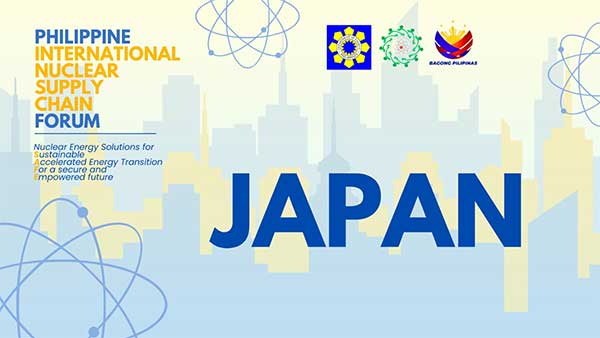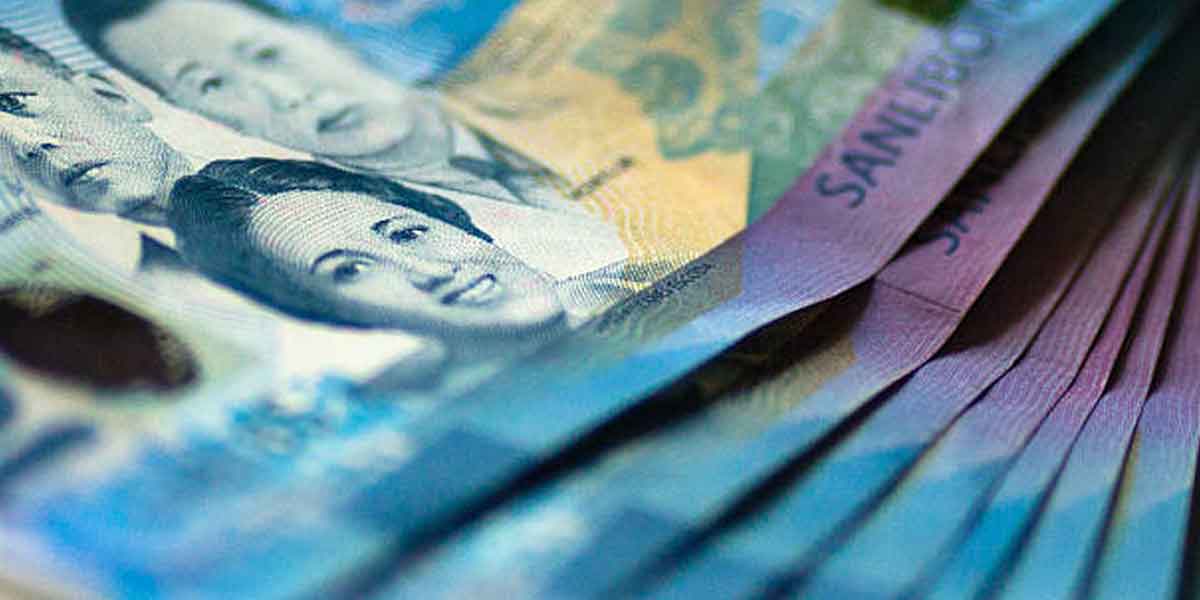
Japan, a leader in nuclear energy technology, will share insights on industry advancements, best practices, and future directions at the Philippine International Nuclear Supply Chain Forum (PINSCF) 2024, scheduled for Nov. 13-15 at Solaire Resort North in Quezon City.
The Japanese delegation will discuss the history and technological evolution of Japan’s nuclear power sector, with a focus on the maturity of its domestic manufacturing and local supply chain, on Nov. 15, the final day of the forum.
PINSCF 2024 will provide a platform for Philippine energy stakeholders to engage in panel discussions, networking sessions, and knowledge-sharing activities with nuclear energy experts from the United States, Canada, France, South Korea, Japan, and other countries with extensive experience in nuclear technology.
Japan currently operates 12 nuclear power reactors with a total net capacity of 11,046 MWe, contributing 5.5 percent of Japan’s total electricity production in 2023. By 2030, nuclear energy is expected to comprise 20 percent of Japan’s power generation mix.
As one of the first countries to adopt domestic manufacturing in nuclear power, Japan constructed its first reactor using domestic technologies seven years after the Atomic Energy Basic Law was enacted in 1955. Japan’s first commercial nuclear power reactor, Tokai-No. 1, began operations in 1966.
Japan’s nuclear technologies have advanced globally through international cooperation projects. The JT-60SA, the world’s largest operational experimental nuclear fusion reactor, was inaugurated in Naka, Japan, as a joint project between the European Union and Japan. This project aims to explore fusion as a safe, large-scale, and carbon-free energy source that produces more energy than it consumes.
Japan is also advancing in Small Modular Reactor (SMR) technology through a joint venture with U.S.-based NuScale. Japanese firms IHI Corp., a manufacturer of nuclear power plant components, and JGC Holdings Corp., which provides engineering services for nuclear power facilities, are working with NuScale. The venture recently reached a milestone with the development of an Emergency Planning Zone framework, a preplanned protective action strategy within a 0.2-16 km range around the plant.
Additionally, Japan is developing ARKADIA, an AI-aided platform that integrates simulation technologies, design optimization, and knowledge integration to accelerate the design and development of advanced nuclear reactors.
“The Philippines hopes to tap into Japan’s innovations, best practices, and lessons learned in building a secure nuclear energy infrastructure. Japan’s commitment to continuous improvement, efficiency, and precision will help guide us in achieving energy resilience and security,” the Philippine Department of Energy said.
Japan’s Strategic Energy Plan is founded on the principles of 3E + S — energy security, economic efficiency, environmental protection, and safety. Nuclear energy was reinstated in Japan’s energy policy last year to strengthen energy security and achieve carbon neutrality by 2050, aligning nuclear power with renewable energy in the Basic Policy for the Realization of Green Transformation.
Nuclear energy also plays a critical role in the Philippine Energy Outlook, which targets a capacity of 1,200 MW by 2032, set to expand to 2,400 MW by 2035 and 4,800 MW by 2050. The Philippines acknowledges the international community’s support through technical assistance, expert missions, and strategic partnerships as it explores nuclear energy projects. PINSCF 2024 will foster collaboration between local industry stakeholders, government agencies, and educational institutions with global leaders in nuclear power generation.
Registration for the forum is available through the official website at www.nuclearforumph.com. For more information, participants may contact the Nuclear Energy Program Secretariat at nepiac.secretariat@gmail.com or reach out to doe.media@doe.gov.ph for media inquiries.




















